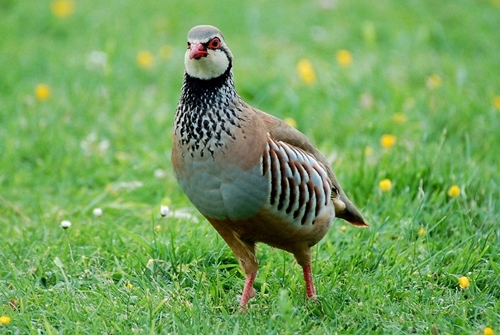
Releasing red-legged partridges can be both rewarding and frustrating with many shoots deciding to release a handful (circa 100-200) on the farm to add a little extra on shoot days. But often these additions achieve abysmal returns – around 10% for the time, effort and expense of releasing.
Red-legged partridges are generally released as 12-18 week old poults, but birds released between 16-18 weeks are often less susceptible to predation.
1. Depending on numbers, birds are released into netted temporary partridge pens made from pen sections which are erected within game cover crops. After release remove the pens as it will help keep the area tidy.
2. Release birds within a couple of days of their arrival. Releasing around 25-30 helps to establish a covey and it also prevents predation pressure due to other birds ability to raise the alarm of any potential danger. Birds should be kept in the pen no longer than 10-14 days, as any longer can cause potential disease issues.
3. A regimented fox control programme should be implemented on the shoot to protect the young partridges after release, to help increase the likelihood of holding birds within the covers.
4. Having an electric fence around the whole game cover block along with the release pen can also pay dividends as it deters both foxes and badgers from disrupting the birds, improving survival rates.
Did you know?
Red-legged partridges often prefer to forage seed scattered on the ground rather than feeders. Utilise both hopper feeding and spinning a wheat mix onto the floor to add additional interest.
